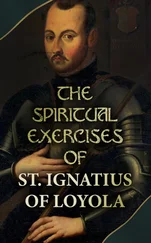Ignatius Donnelly - Antediluvian world
Здесь есть возможность читать онлайн «Ignatius Donnelly - Antediluvian world» весь текст электронной книги совершенно бесплатно (целиком полную версию без сокращений). В некоторых случаях можно слушать аудио, скачать через торрент в формате fb2 и присутствует краткое содержание. Жанр: Старинная литература, на русском языке. Описание произведения, (предисловие) а так же отзывы посетителей доступны на портале библиотеки ЛибКат.
- Название:Antediluvian world
- Автор:
- Жанр:
- Год:неизвестен
- ISBN:нет данных
- Рейтинг книги:5 / 5. Голосов: 1
-
Избранное:Добавить в избранное
- Отзывы:
-
Ваша оценка:
- 100
- 1
- 2
- 3
- 4
- 5
Antediluvian world: краткое содержание, описание и аннотация
Предлагаем к чтению аннотацию, описание, краткое содержание или предисловие (зависит от того, что написал сам автор книги «Antediluvian world»). Если вы не нашли необходимую информацию о книге — напишите в комментариях, мы постараемся отыскать её.
Antediluvian world — читать онлайн бесплатно полную книгу (весь текст) целиком
Ниже представлен текст книги, разбитый по страницам. Система сохранения места последней прочитанной страницы, позволяет с удобством читать онлайн бесплатно книгу «Antediluvian world», без необходимости каждый раз заново искать на чём Вы остановились. Поставьте закладку, и сможете в любой момент перейти на страницу, на которой закончили чтение.
Интервал:
Закладка:
All these things speak of a common origin; this fact has been generally recognized, but it has always been interpreted that the Irish camp, from the East, and were in fact a migration of Hindoos. There is not the slightest evidence to sustain this theory. The Hindoos have never within the knowledge of man sent out colonies or fleets for exploration; but there is abundant evidence, on the other hand, of migrations from Atlantis eastward. And how could the Sanscrit writings have preserved maps of Ireland, England, and Spain, giving the shape and outline of their coasts, and their very names, and yet have preserved no memory of the expeditions or colonizations by which they acquired that knowledge?
Another proof of our theory is found in “the round-towers” of Ireland.
Attempts have been made to show, by Dr. Petrie and others, that these extraordinary structures are of modern origin, and were built by the Christian priests, in which to keep their church-plate. But it is shown that the “Annals of Ulster” mention the destruction of fifty-seven of them by an earthquake in A.D. 448; and Giraldus Cambrensis shows that Lough Neagh was created by an inundation, or sinking of the laud, in A.D. 65, and that in his day the fishermen could “See the round-towers of other days In the waves beneath them shining.”
Moreover, we find Diodorus Siculus, in a well-known passage, referring to Ireland, and describing it as “an island in the ocean over against Gaul, to the north, and not inferior in size to Sicily, the soil of which is so fruitful that they mow there twice in the year.” He mentions the skill of their harpers, their sacred groves, and their singular temples of round form.
THE
BURGH
OF
MOUSSA
, IN
THE
SHETLANDS
We find similar structures in America, Sardinia, and India. The remains of similar round-towers are very abundant in the Orkneys and Shetlands.
“They have been supposed by some,” says Sir John Lubbock, “to be Scandinavian, but no similar buildings exist in Norway, Sweden, or Denmark, so that this style of architecture is no doubt anterior to the arrival of the Northmen.” I give above a picture of the Burgh or Broch of the little island of Moussa, in the Shetlands. It is circular in form, forty-one feet in height. Open at the top; the central space is twenty feet in diameter, the walls about fourteen feet thick at the base, and eight feet at the top. They contain a staircase, which leads to the top of the building. Similar structures are found in the Island of Sardinia.
ROUND-TOWER
OF
THE
CANYON
OF
THE
MANCOS
,
COLORADO
, U.S.
In New Mexico and Colorado the remains of round-towers are very abundant. The illustration below represents our of these in the valley of the Mancos, in the south-western corner of Colorado. A model of it is to be found in the Smithsonian collection at Washington. The tower stands at present, in its ruined condition, twenty feet high. It will be seen that it resembles the towers of Ireland, not only in its circular form but also in the fact that its door-way is situated at some distance from the ground.
It will not do to say that the resemblance between these prehistoric and singular towers, in countries so far apart as Sardinia, Ireland, Colorado, and India, is due to an accidental coincidence. It might as well be argued that the resemblance between the roots of the various Indo-European languages was also due to accidental coincidence, and did not establish any similarity of origin. In fact, we might just as well go back to the theory of the philosophers of one hundred and fifty years ago, and say that the resemblance between the fossil forms in the rocks and the living forms upon them did not indicate relationship, or prove that the fossils were the remains of creatures that had once lived, but that it was simply a way nature had of working out extraordinary coincidences in a kind of joke; a sort of “plastic power in nature,” as it was called.
We find another proof that Ireland was settled by the people of Atlantis in the fact that traditions long existed among the Irish peasantry of a land in the “Far West,” and that this belief was especially found among the posterity of the Tuatha-de-Dananns, whose connection with the Formorians we have shown.
The Abbe Brasseur de Bourbourg, in a note to his translation of the “Popol Vuh,” says:
“There is an abundance of legends and traditions concerning the passage of the Irish into America, and their habitual communication with that continent many centuries before the time of Columbus. We should bear in mind that Ireland was colonized by the Phoenicians (or by people of that race). An Irish Saint named Vigile, who lived in the eighth century, was accused to Pope Zachary of having taught heresies on the subject of the antipodes. At first he wrote to the pope in reply to the charge, but afterward he went to Rome in person to justify himself, and there he proved to the pope that the Irish had been accustomed to communicate with a transatlantic world.”
“This fact,” says Baldwin, “seems to have been preserved in the records of the Vatican.”
The Irish annals preserve the memory of St. Brendan of Clonfert, and his remarkable voyage to a land in the West, made A.D. 545. His early youth was passed under the care of St. Ita, a lady of the princely family of the Desii. When he was five years old he was placed under the care of Bishop Ercus. Kerry was his native home; the blue waves of the Atlantic washed its shores; the coast was full of traditions of a wonderful land in the West. He went to see the venerable St. Enda, the first abbot of Arran, for counsel. He was probably encouraged in the plan he had formed of carrying the Gospel to this distant land. “He proceeded along the coast of Mayo, inquiring as he went for traditions of the Western continent. On his return to Kerry he decided to set out on the important expedition. St. Brendan’s Hill still bears his name; and from the bay at the foot of this lofty eminence be sailed for the ‘Far West.’ Directing his course toward the southwest, with a few faithful companions, in a well-provisioned bark, he came, after some rough and dangerous navigation, to calm seas, where, without aid of oar or sail, he was borne along for many weeks.” He had probably entered upon the same great current which Columbus travelled nearly one thousand years later, and which extends from the shores of Africa and Europe to America. He finally reached land; he proceeded inland until he came to a large river flowing from east to west, supposed by some to be the Ohio. “After an absence of seven years he returned to Ireland, and lived not only to tell of the marvels he had seen, but to found a college of three thousand monks at Clonfert.” There are eleven Latin MSS. in the Bibliotheque Imperiale at Paris of this legend, the dates of which vary from the eleventh to the fourteenth century, but all of them anterior to the time of Columbus.
The fact that St. Brendan sailed in search of a country in the west cannot be doubted; and the legends which guided him were probably the traditions of Atlantis among a people whose ancestors had been derived directly or at second-hand from that country.
This land was associated in the minds of the peasantry with traditions of Edenic happiness and beauty. Miss Eleanor C. Donnelly, of Philadelphia, has referred to it in her poem, “The Sleeper’s Sail,”
where the starving boy dreams of the pleasant and plentiful land: “‘Mother, I’ve been on the cliffs out yonder, Straining my eyes o’er the breakers free To the lovely spot where the sun was setting, Setting and sinking into the sea.
“‘The sky was full of the fairest colors Pink and purple and paly green, With great soft masses of gray and amber, And great bright rifts of gold between. “‘And all the birds that way were flying, Heron and curlew overhead, With a mighty eagle westward floating, Every plume in their pinions red. “‘And then I saw it, the fairy city, Far away o’er the waters deep; Towers and castles and chapels glowing Like blessed dreams that we see in sleep. “‘What is its name?’ ‘Be still, acushla (Thy hair is wet with the mists, my boy); Thou hast looked perchance on the Tir-na-n’oge, Land of eternal youth and joy! “‘Out of the sea, when the sun is setting, It rises, golden and fair to view; No trace of ruin, or change of sorrow, No sign of age where all is new. “‘Forever sunny, forever blooming, Nor cloud nor frost can touch that spot, Where the happy people are ever roaming, The bitter pangs of the past forgot.’
Читать дальшеИнтервал:
Закладка:
Похожие книги на «Antediluvian world»
Представляем Вашему вниманию похожие книги на «Antediluvian world» списком для выбора. Мы отобрали схожую по названию и смыслу литературу в надежде предоставить читателям больше вариантов отыскать новые, интересные, ещё непрочитанные произведения.
Обсуждение, отзывы о книге «Antediluvian world» и просто собственные мнения читателей. Оставьте ваши комментарии, напишите, что Вы думаете о произведении, его смысле или главных героях. Укажите что конкретно понравилось, а что нет, и почему Вы так считаете.












